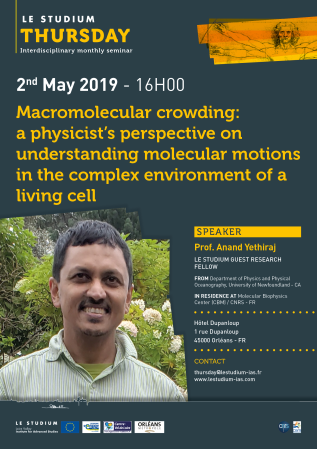Macromolecular crowding: a physicist's perspective on understanding molecular motions in the complex environment of a living cell
Hôtel Dupanloup
1 rue Dupanloup
45000 Orléans
France
Presentation
Inside a living cell, approximately 30 - 40% of the available volume is occupied by large ("macro") molecules, as well as cytoskeletal fibres and organelles. There are many types of these macro-molecules and they can be extended in form (e.g. nucleic acids) or globular (e.g. proteins). This crowded environment can affect the shape and the motions of a given macromolecule, such as a protein, profoundly.
It is amazing that all the biochemical reactions that are necessary for the proper functioning of a cell occur within a confined and crowded cellular environment. In this talk, I will introduce the physicist's point of view of macromolecular crowding, starting with very simple systems and building complexity step-by-step from the bottom up.
Life itself is represented by processes that are intrinsically out of equilibrium and consume energy. How does being out of equilibrium contribute to macromolecular dynamics in a crowded environment? I will end with a brief preview of recent work begun last year to drive a crowded system out of equilibrium.
Speaker
LE STUDIUM Guest Research Fellow
FROM: Department of Physics and Physical Oceanography, University of Newfoundland - CA
IN RESIDENCE AT: Molecular Biophysics Center (CBM) / CNRS - FR






